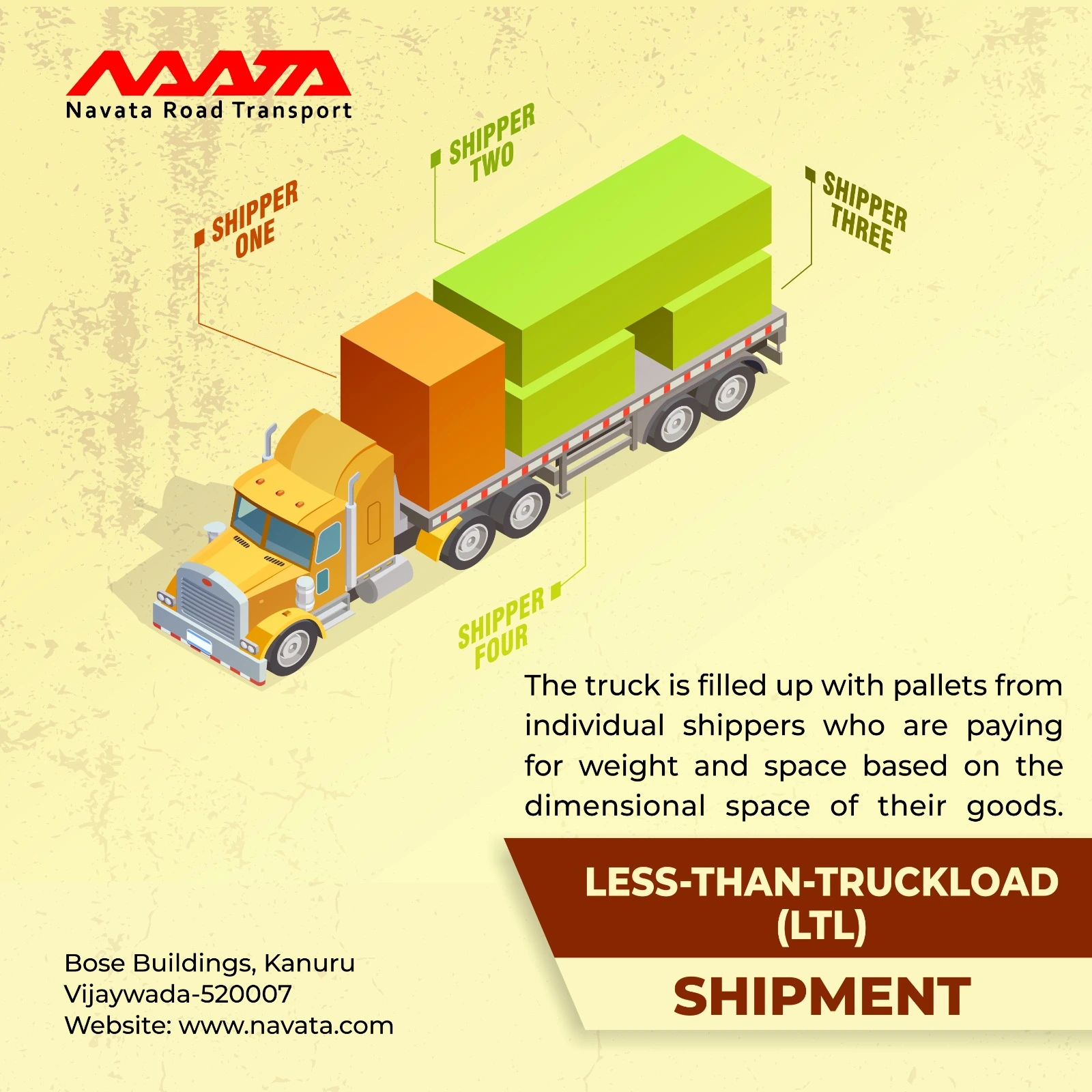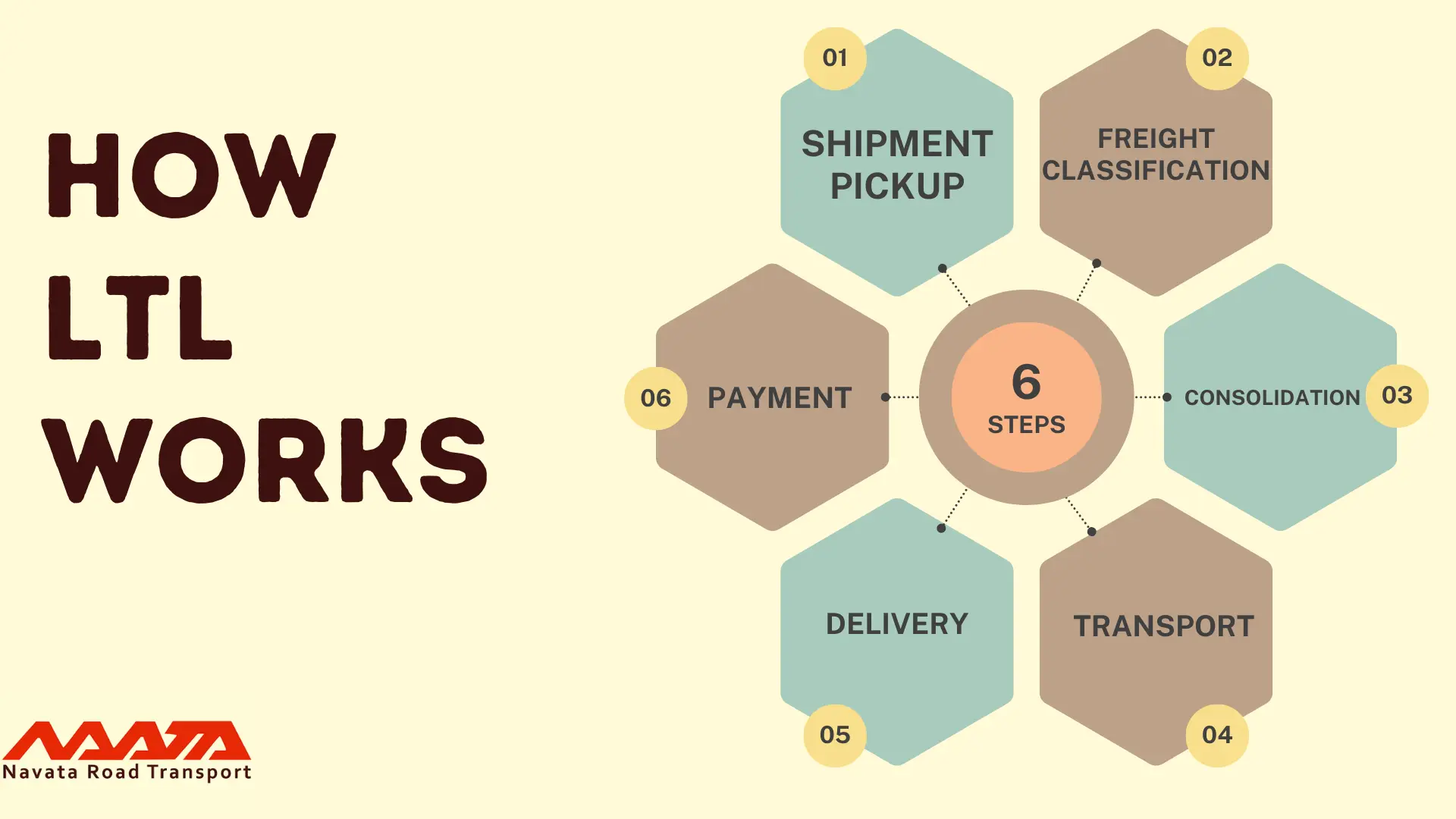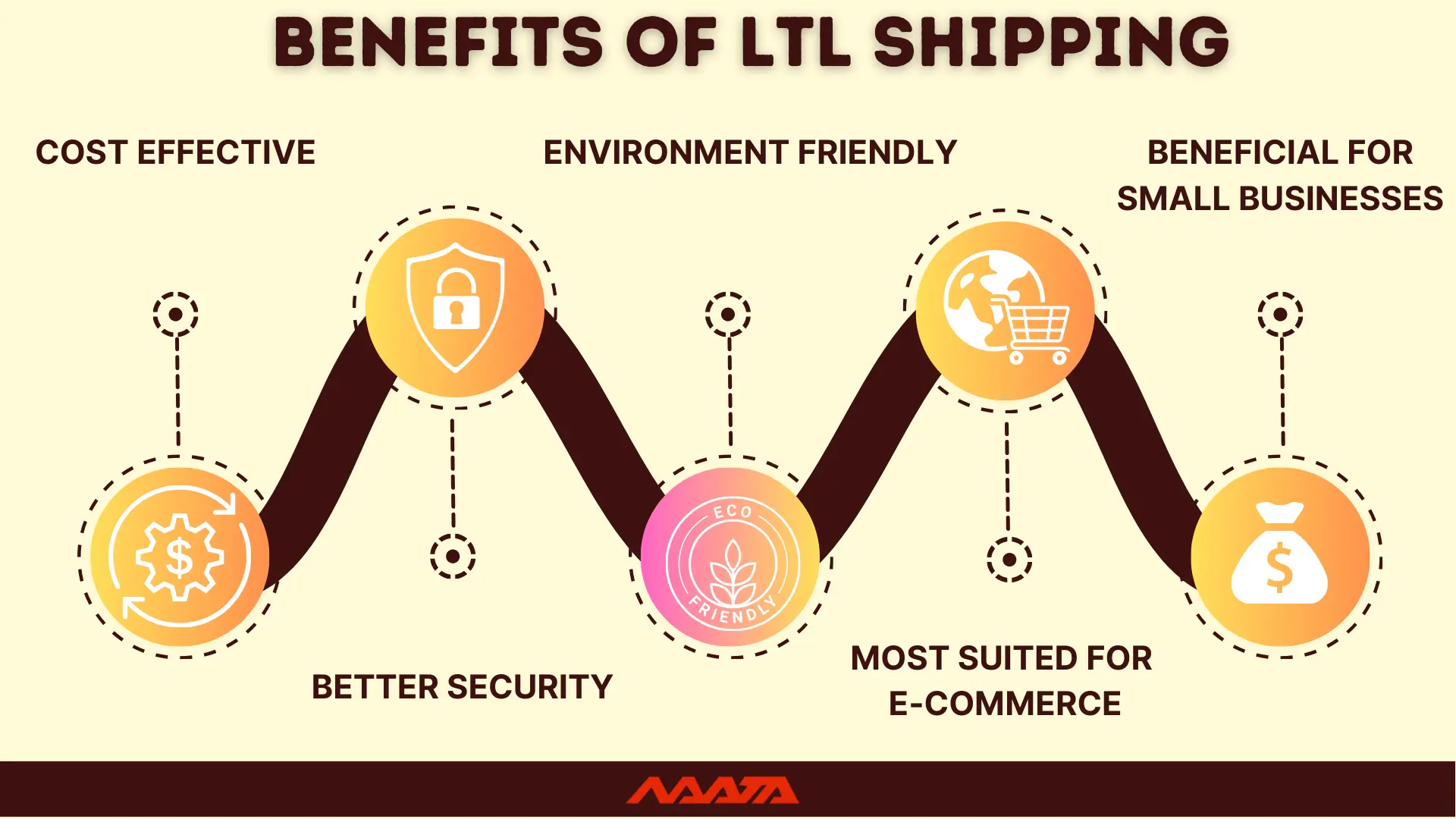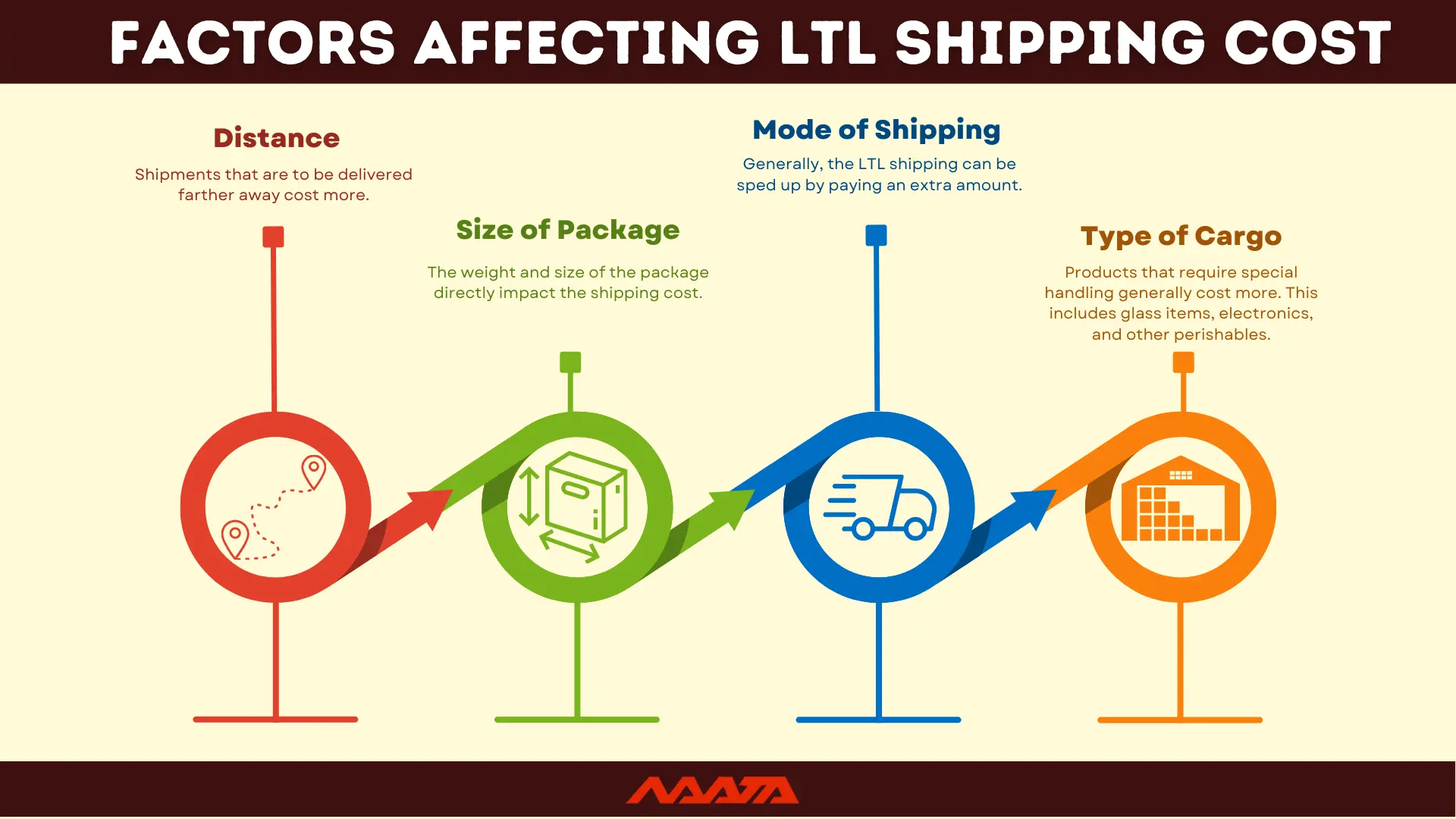What is LTL Shipping, Benefits of LTL and How it Works?
Table of Contents
What is LTL Shipping?
Less-than-truckload (LTL) or less-than-load shipping services, as the name indicates, do not require a full truckload. These are relatively small goods freights. LTL services are provided by nearly all national postal carriers and specialized logistics suppliers.
It is a method of goods transportation in which many shipments from various shippers are aggregated onto a single vehicle. LTL shipping is typically utilized when the size or weight of a package does not necessitate a full truckload but is too large to send as a parcel.
LTL service providers diligently optimize their loads so that they can transfer a greater quantity of items in a comparably effective manner. As a result, it’s no wonder that shippers choose LTL shipping because it’s less expensive and provides more flexibility. Another benefit of LTL shipment is that it is environmentally beneficial.

You Might Also Like To Read: What is FTL Shipping: How FTL Works and Its Benefits
How LTL Shipping Works?
Less-than-truckload (LTL) is utilized to move smaller items that don’t need a full trailer. LTL shipments generally have a trailer length of less than 20 feet and a weight range of 150 to 15,000 pounds. Here’s how LTL shipping exactly works:
- Shipment pickup: The shipper arranges for the LTL carrier to pick up the shipment from their location.
- Freight classification: The carrier determines the freight classification of the shipment based on its weight, dimensions, and the type of goods being shipped. This classification determines the rate charged for the shipment.
- Consolidation: The carrier assembles a single trailer out of several LTL shipments coming from separate shippers.
- Transport: The condensed consignment is delivered by the carrier to a hub terminal, where it is sorted and loaded into a different trailer for distribution.
- Delivery: The package is brought by the carrier to the consignee’s address.
- Payment: The shipper pays for the LTL freight charges based on the freight classification and distance traveled.
LTL shipping can be a cost-effective way to transport smaller shipments, as shippers only pay for the space their freight occupies in the trailer, rather than the entire trailer. However, LTL shipments may take longer to arrive than full truckload shipments, as the carrier must consolidate multiple shipments and make multiple stops along the way.

Also Read: What is FTL Shipping: 4 Key Difference Between LTL and FTL: Pros and Cons LTL & FTL
Benefits of LTL Shipping
Cost Effective
As already stated, in the case of an LTL shipment, you only pay for the space occupied by your pallet. Thus, you end up saving money.
Better Security
Since the products are first packed into pallets before being loaded in the product, therefore, there is a greater chance of the products remaining secure, especially in the case of smaller units.
Environment Friendly
LTL presents a more sustainable and environment-friendly method of delivery. This is because more cargo can be shipped together which means there is reduced fuel consumption, resulting in a greener shipment.
Most Suited for E-Commerce
Where most e-commerce businesses are looking for effective shipping solutions which are aligned with the customers’ needs, LTL presents the perfect solution. It not only increases security but also shortens the delivery period as there is no need to wait for a full truckload.
Beneficial for Small Businesses
LTL is the perfect partner for small businesses. Most small businesses have smaller deliveries and therefore, LTL can present a great solution to their delivery needs without burning a hole in their pockets.

Factors Affecting LTL Shipping Cost
There are multiple factors that can impact the cost of delivery for LTL shipments. These are:
Distance
Shipments that are to be delivered farther away cost more.
Size of Package
The weight and size of the package directly impact the shipping cost.
Mode of Shipping
Generally, the LTL shipping can be sped up by paying an extra amount.
Type of Cargo
Products that require special handling generally cost more. This includes glass items, electronics, and other perishables.

How to Reduce LTL Shipping Costs?
Reducing LTL shipping costs can be challenging, but there are several strategies that shippers can use to lower their freight expenses. Here are some tips for reducing LTL shipping costs:
Optimize packaging
Efficient packaging can help reduce the size and weight of a shipment, which can lower its freight class and cost. Shippers should use the smallest possible container that can safely protect their goods, and avoid using excess packaging materials.
Consolidate shipments
Shippers can reduce LTL shipping costs by consolidating multiple smaller shipments into a single larger shipment. This can help lower the overall freight cost per unit and may qualify the shipment for a lower freight class.
Negotiate rates
Shippers should negotiate rates with LTL carriers and compare rates between carriers to ensure they are getting the best deal.
Use a freight broker
A freight broker can help shippers find the most cost-effective carrier for their shipment and negotiate lower rates.
Plan ahead
Advance planning can help shippers avoid expedited shipping charges and take advantage of lower-cost shipping options. Shippers should plan their shipping schedule well in advance and avoid last-minute rush orders.
Use intermodal transportation
When moving goods, intermodal transportation combines several modes of transportation, such as trains and trucks. Utilizing the cheaper cost of rail transportation over greater distances can assist in lowering LTL shipping costs.
Shippers may lower their LTL shipping expenses and boost their bottom line by putting these tactics into practice.
The Future of LTL Freight
As technology continues to evolve, the supply chain keeps getting more complicated. LTL is no exception. The LTL freights are becoming more sophisticated. Now, there is a greater emphasis on the ability to handle more volumes of products.
Today, in order to make the delivery process smoother, it has become important for shipping providers to accurately assess multiple carriers, measure delivery performance and accurately follow the shipping process.
In order to make the most out of your LTL freights, you must partner with other businesses, work with logistics providers and look for LTL shippers with smart dispatch and routing tools. This will make your shipping more affordable.
The LTL freight market is anticipated to keep developing and adapting to shifting market conditions and consumer expectations. The following trends are those that are most likely to affect LTL freight in the future:
Technology integration
The integration of technology into LTL freight operations is likely to accelerate, with increased use of automation, artificial intelligence, and data analytics to improve efficiency and reduce costs. This could include the use of autonomous vehicles for transportation and robotic systems for warehouse operations.
E-commerce growth
The growth of e-commerce is likely to drive demand for LTL shipping, as more consumers and businesses rely on online shopping and shipping for their goods. This could lead to new opportunities for LTL carriers to expand their operations and offer more flexible shipping options.
Sustainability and environmental concerns
The focus on sustainability and environmental concerns is likely to increase, with LTL carriers implementing more eco-friendly practices such as alternative fuels, energy-efficient vehicles, and improved routing and logistics to reduce emissions.
The LTL freight industry is expected to continue to evolve and adapt to changing market conditions and customer demands. Here are some trends that are likely to shape the future of LTL freight:
Technology integration
The integration of technology into LTL freight operations is likely to accelerate, with increased use of automation, artificial intelligence, and data analytics to improve efficiency and reduce costs. This could include the use of autonomous vehicles for transportation and robotic systems for warehouse operations.
E-commerce growth
The growth of e-commerce is likely to drive demand for LTL shipping, as more consumers and businesses rely on online shopping and shipping for their goods. This could lead to new opportunities for LTL carriers to expand their operations and offer more flexible shipping options.
Sustainability and environmental concerns
The focus on sustainability and environmental concerns is likely to increase, with LTL carriers implementing more eco-friendly practices such as alternative fuels, energy-efficient vehicles, and improved routing and logistics to reduce emissions.
Capacity challenges
Capacity challenges are likely to persist in the LTL freight industry, as carriers struggle to keep up with demand and find qualified drivers. This could lead to increased competition and consolidation in the industry.
Changes in regulations
Changes in government regulations, such as new safety standards or changes in trade agreements, could impact the LTL freight industry and require carriers to adjust their operations accordingly.
Overall, the future of LTL freight is likely to be shaped by technological advancements, e-commerce growth, sustainability concerns, capacity challenges, and regulatory changes. LTL carriers that are able to adapt to these trends and meet the changing needs of their customers will be well-positioned for success in the years ahead.
Thanks For Reading: What is LTL Shipping, Benefits of LTL and How it Works?
Powered By 360Presence




